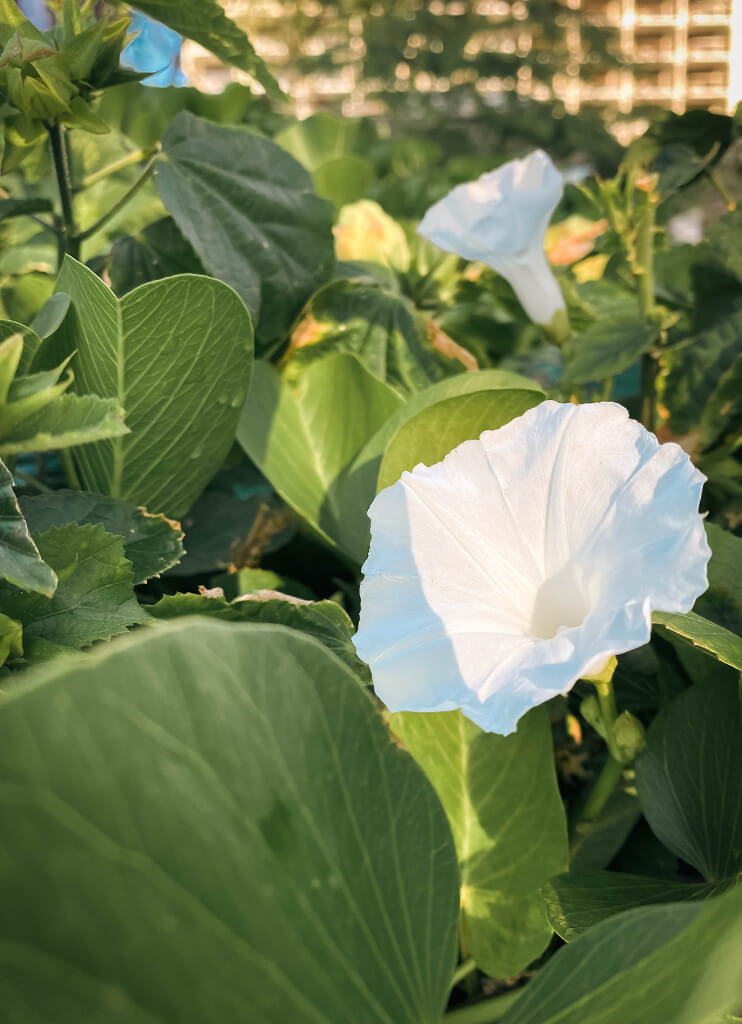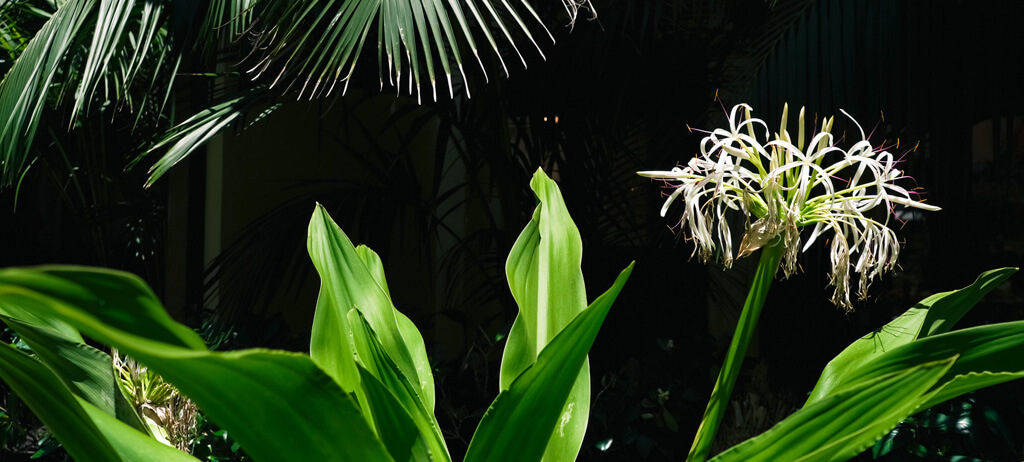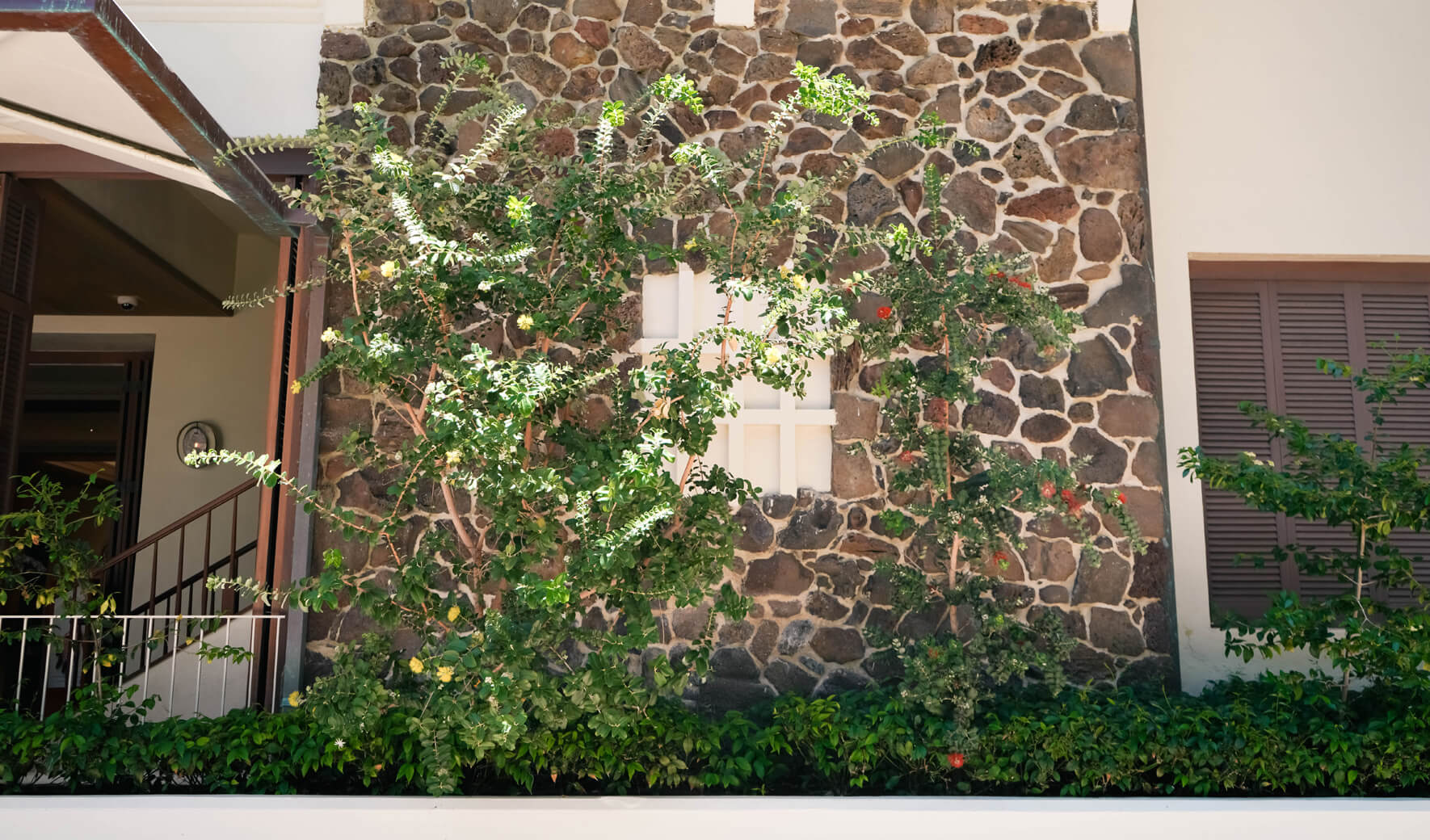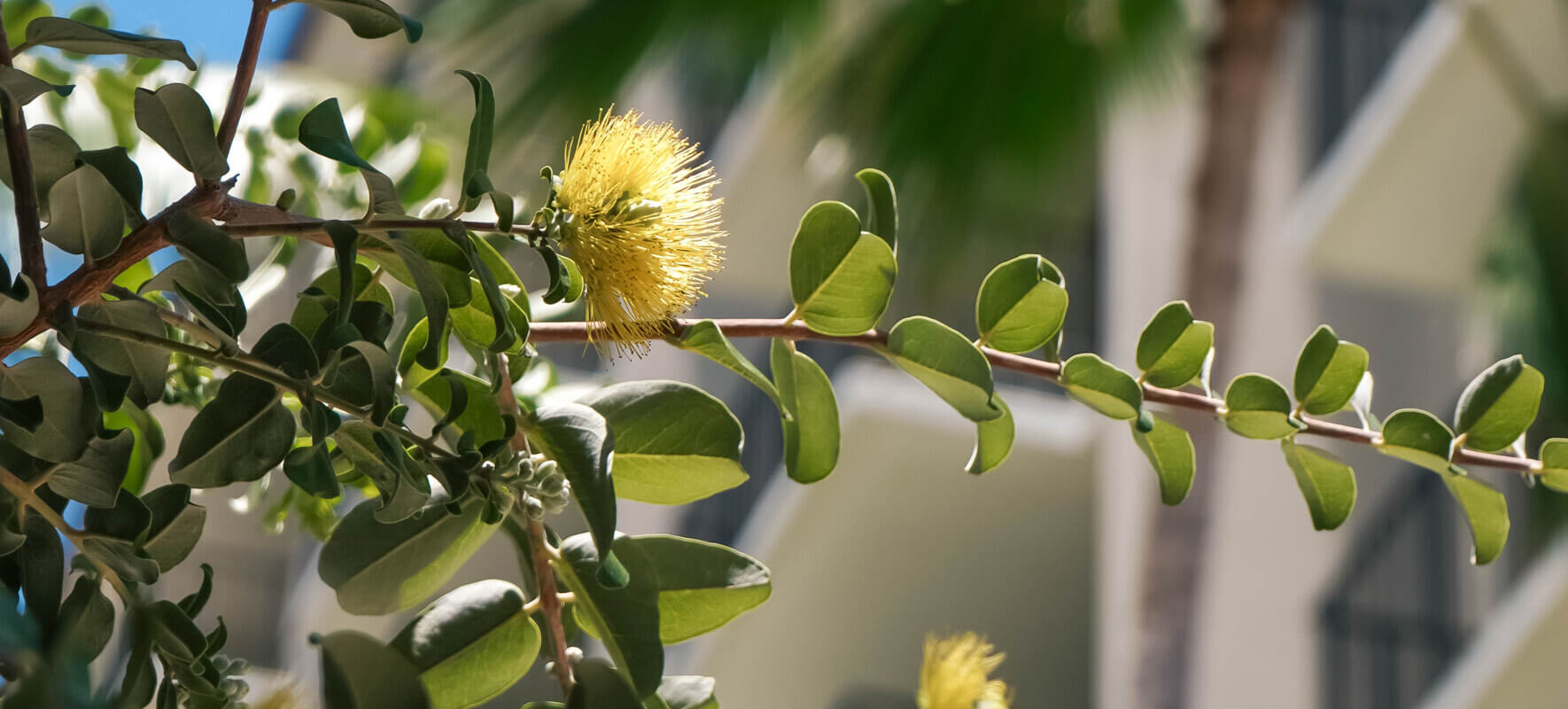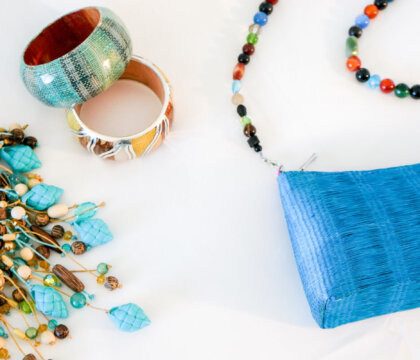At Halekulani, the spirit of aloha is felt in our hospitality and seen in the lush, living landscape surrounding the property.
Carefully curated throughout the property, our native Hawaiian plants are more than just beautiful—they are storytellers, healers, and cultural treasures that connect us to the land and its heritage.
The sweet, intoxicating scent of the Puakenikeni tree (Fagraea berteroana) often greets guests as they stroll through our gardens. Translating to “ten-cent flower” in Hawaiian, this blossom was once sold for a dime apiece and is cherished for lei-making. Its creamy white petals gradually deepen to a golden orange as they age, symbolizing transformation and grace. You’ll find this fragrant bloom along the pathway from the pool to the lobby, on the right-hand side.
The Queen Emma Spider Lily (Crinum augustum) is a striking flower with long, delicate petals that resemble a spider’s legs. Named after Queen Emma, the wife of King Kamehameha IV, this regal bloom adds elegance to our gardens and serves as a tribute to Hawaii’s royal legacy. Its magenta and white star-shaped flowers, paired with deep purple foliage, are easily recognizable. Look for it along the wall adjacent to the back of the front house lobby, from the pool to the lobby.
The Hau tree (Hibiscus tiliaceus) has long been valued in Hawaiian culture. Its strong yet flexible wood was traditionally used to make canoes, ropes, and fishing gear. At Halekulani, these trees provide shade and serenity along our pathways, easily identified by their heart-shaped leaves and yellow blossoms with a red center. You’ll find them near the pool station and close to Orchids.
The ʻŌhiʻa lehua (Metrosideros polymorpha) is a sacred tree in Hawaiian mythology, often associated with Pele, the goddess of volcanoes. As one of the first plants to grow on new lava flows, it symbolizes strength, renewal, and resilience. At the hotel, we feature both the more common red variety and the rarer yellow variety, located at the Main Building Orchids entry on the right side.
The majestic Koa tree (Acacia koa) is one of Hawaii’s most prized hardwoods, traditionally used to craft canoes, surfboards, and weapons. Its presence on our grounds honors the strength and craftsmanship of Hawaiian ancestors and reflects our commitment to preserving native species. This tree stands proudly on the west side of the Mahiole statue.
Delicate and feathery, the Palapalai fern (Microlepia strigosa) holds a special place in hula tradition. Often worn by dancers and used in ceremonies for its spiritual significance, it adds a soft, graceful texture to our garden beds. You can also find these ferns in the planters near Garden Terrace.
The Alaheʻe (Psydrax odorata) is a lesser-known native shrub with glossy leaves and fragrant white flowers. Traditionally used for tools and dyes, it’s a quiet yet meaningful part of our landscape, reminding us of the beauty found in subtle details. Look for it near the entrance to Orchids in the main building.
While not native, the Coconut palm (Cocos nucifera) is deeply woven into Hawaiian life. Every part of the tree—from the fruit to the fronds—has been used for food, shelter, beauty, and tools. Its towering presence at Halekulani is a nod to the island’s resourceful spirit.
The Pohuehue (Ipomoea pes-caprae subsp. brasiliensis) is a resilient native vine with thick, glossy leaves and vibrant purple flowers. Traditionally used in poultices for wounds and sores, it’s a vibrant yet understated part of our coastal landscape. Known as the “Beach Morning Glory,” it also serves as the logo of our sister hotel, Halepuna Waikiki. You’ll find the white and yellow varieties surrounding our iconic Kiawe Tree in a planter and along the shoreline of Waikiki Beach in front of the hotel.
Each plant at Halekulani was thoughtfully chosen for its beauty and the story each tells. As you wander throughout the hotel, we invite you to pause, breathe in the fragrance, and feel the deep-rooted connection between the land, its people, and the place we call home.


